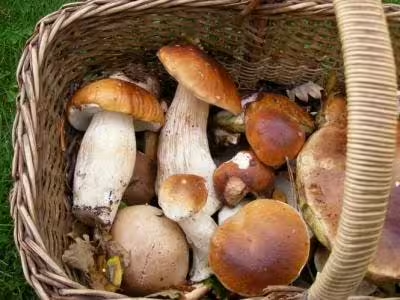The porcini is recognizable by its swollen and firm foot, white in color. The flesh is white with the break and the cut, and keeps this shade. There are more than twenty species of edible boletes. From the end of June to November, depending on the species, the boletes are picking in our forests, our plains, our mountains. The varieties of boletes in the broad sense of the term are the appendiculated boletal, the boletal bai, the pale boletus, the indigo bolet, the yellow pine bole, the red boletus and the royal boletus.
